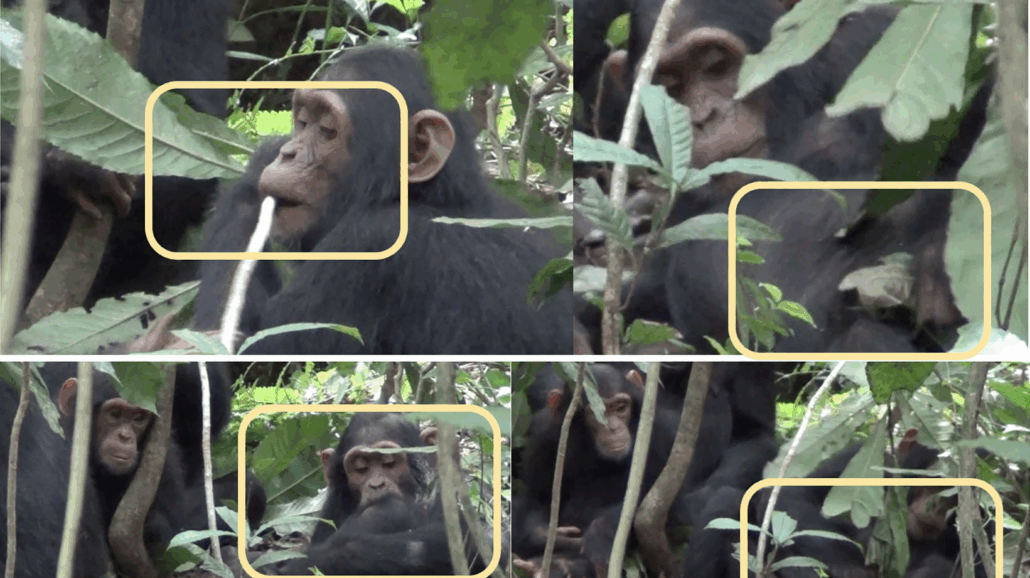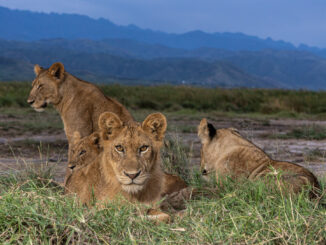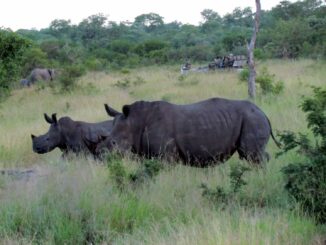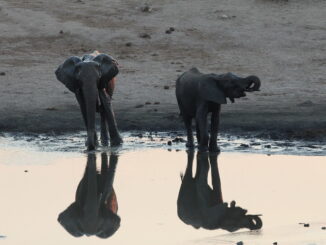
Great apes not only treat themselves with medicinal plants, but they also administer first aid to each other in this way.
That’s what scientists are now saying after witnessing a colony of chimpanzees in Uganda perform a version of first aid on other injured chimpanzees.
Previously, a team of researchers in Indonesia witnessed an orangutan treating a wound on its face by chewing on leaves and patching the wound with this chewed plant material. The leaves in question are known to have medicinal properties.
Sure enough, eventually the orangutan’s injury healed nicely. Now, a separate study claims to have witnessed similar behavior in Uganda. Only in this instance, chimpanzees were seen chewing medicinal leaves and using them to patch the wounds of other chimpanzees.
The research was led out of the University of Oxford in the United Kingdom. U of Oxford professor and lead author Dr. Elodie Freymann says the fact that chimpanzees practice a type of first aid on each other could provide us with a glimpse of how medicine evolved in humans.
“Our research helps illuminate the evolutionary roots of human medicine and healthcare systems,” Freymann said.
The study occurred over a period of four months in the Budongo Forest Reserve close to Murchison Falls National Park in west-central Uganda. Two separate chimpanzee communities were followed and monitored.
The researchers named the two chimpanzee groups Sonso and Waibira.
The team said the chimps often became injured when fighting each other. Sometimes they were also injured in snares set by human poachers.
After suffering injuries from inter-group fights or snares, the researchers said they witnessed at least seven instances of injured chimps receiving care from others. In 34 witnessed cases, the chimpanzees attended to their injuries by themselves.
The type of care varied, but all the injuries eventually healed, and the chimpanzees recovered.
Treatment techniques included “direct wound licking, which removes debris and potentially applies antimicrobial compounds in saliva; finger licking followed by wound pressing; leaf-dabbing; and chewing plant materials and applying them directly to wounds,” Freymann noted.
They found no cases of any one sex receiving preferential treatment over the other—males and females were cared for in equal measure. They also noted four instances where injured chimpanzees were treated by other chimps not genetically related to them.
Though this discovery is exciting, Freymann argued that further study is warranted. In particular, the team wants to analyze the types of leaves used in chimp wound treatments to verify whether they have medicinal properties, as was the case with the orangutan self-care case discovered in Indonesia.
“By documenting how chimpanzees identify and utilize medicinal plants and provide care to others, we gain insight into the cognitive and social foundations of human healthcare behaviors,” Freymann said.
Park Info
Park:
Budongo Forest, Uganda
Location:
Uganda
More Information:



